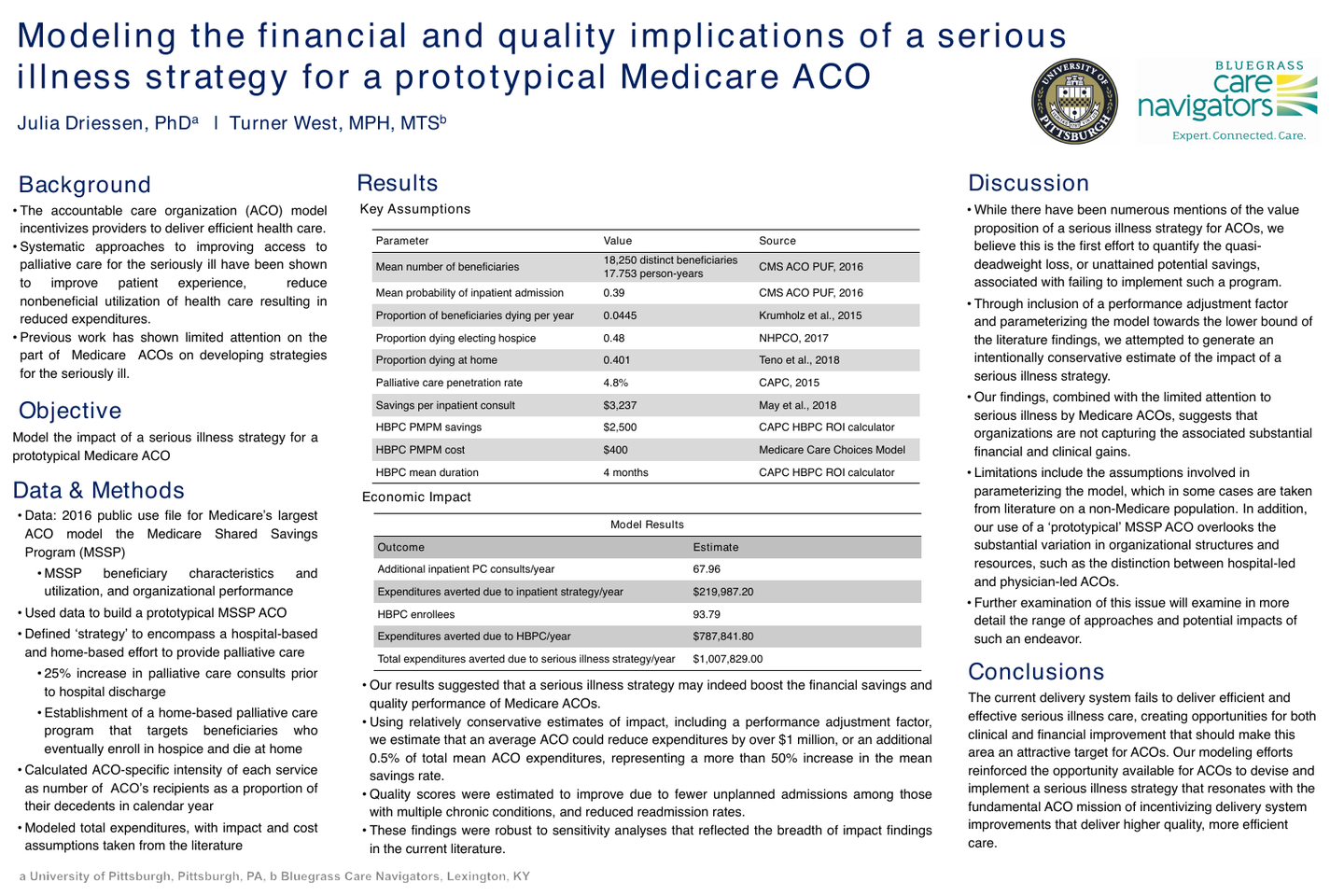Modeling the Financial and Quality Implications of a Serious Illness Strategy for a Prototypical Medicare ACO
Systematic approaches to improving access to palliative care for the seriously ill have been shown to improve patient experience, reduce nonbeneficial utilization of health care resulting in reduced expenditures. These characteristics are consistent with the goals of the accountable care organization (ACO) model, yet previous work has shown limited attention on the part of Medicare ACOs on developing strategies for the seriously ill. Using data from the peer reviewed literature and the Centers for Medicare and Medicaid Services Shared Savings Program Public Use ACO File, we modeled the financial impact of a serious illness strategy for a prototypical Medicare ACO. Baseline characteristics of the ACO patient cohort were modeled to reflect the traditional Medicare population, and baseline ACO outcomes were defined using the latest CMS impact reports on this model of care. We defined ‘strategy’ to encompass both a hospital-based and home-based effort to provide palliative care, assuming a 25% increase in palliative care consults prior to hospital discharge, and the establishment of a home-based palliative care program that targets beneficiaries who eventually enroll in hospice and die at home. We examined total expenditures, with a focus on the impact via averted hospitalizations. Assumptions about impact were taken from the peer-reviewed literature, as were costs incurred for implementing and operating these efforts. Essentially, this project examined what we know about the economics of palliative care in the context of the financial structure of the Medicare ACO model.
Our results suggested that a serious illness strategy may indeed boost the financial savings and quality performance of Medicare ACOs. Using relatively conservative estimates of impact, including a performance adjustment factor, we estimate that an average ACO could reduce expenditures by almost $975,000, or an additional 0.5% of total mean ACO expenditures, representing a more than 50% increase in the mean savings rate. Similarly, quality scores were estimated to improve due to fewer unplanned admissions among those with multiple chronic conditions, and reduced readmission rates. These findings were robust to sensitivity analyses that reflected the breadth of impact findings in the current literature. While there have been numerous efforts to entice ACOs to consider the value of adopting a serious illness strategy, we believe this is the first effort to quantify the quasi-deadweight loss, or unattained potential savings, associated with failing to implement such a program. In acknowledgement of the wide variation in ACO organizational structure and performance, further examination of this issue will move beyond a model of a single prototypical average Medicare ACO and examine in more detail the range of approaches and potential impacts of such an endeavor.
Author
Julia Driessen
Assistant Professor
University of Pittsburgh
Crabtree A614, 130 DeSoto St
Pittsburgh, PA, 15261
